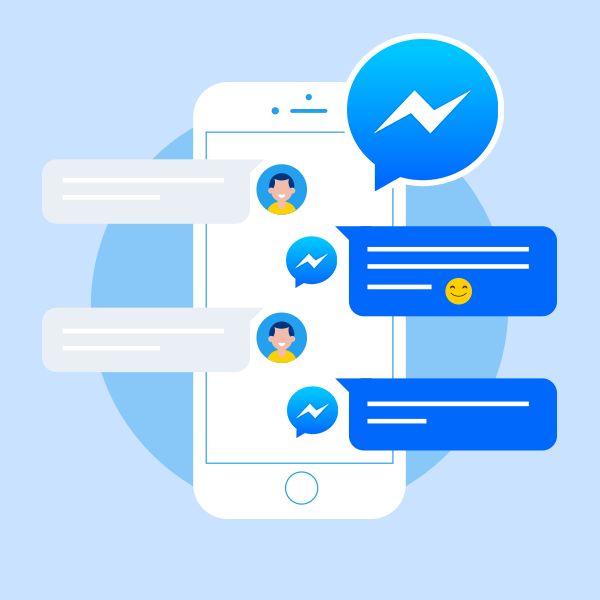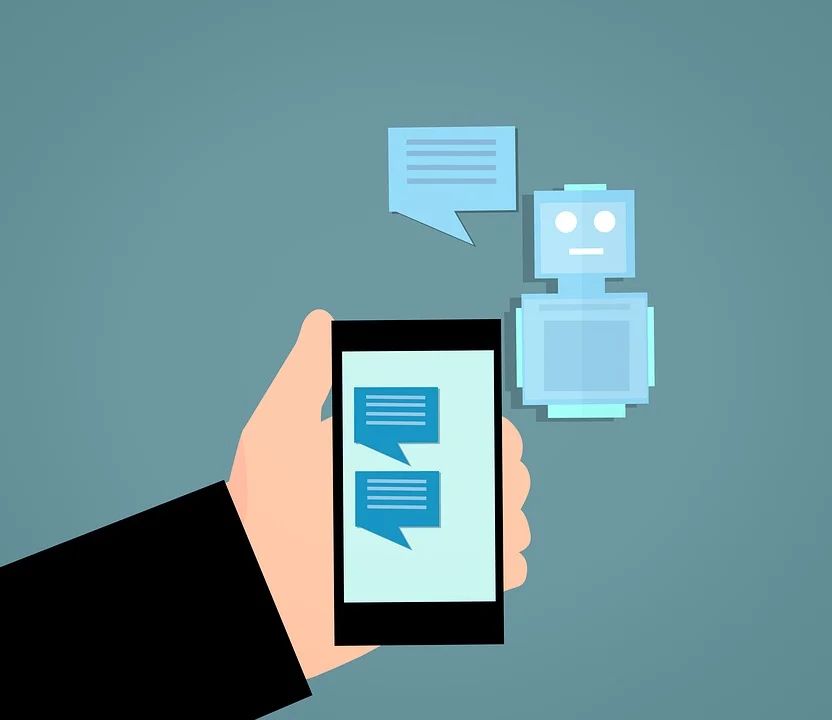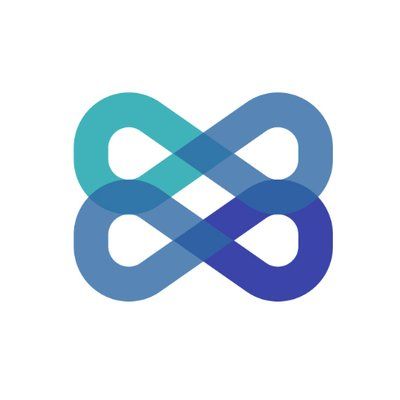

Introduction
The line between the phrases “Taking your business online” and “Setting up a business on Facebook” is getting blurred.


With more than 30% of the world’s population (approximately 2.41 billion people) active every month on Facebook, there is no reason why your brand should not have a Facebook page of its own. To further support this claim, Americans alone spend approximately 20% of their day on Facebook or other platforms that Facebook owns.
So, sit back and think of the enormity of the market you would be able to reach with just a few clicks on the keyboard. But therein lie a few problems:
- How can you cater to the massive audience when queries start to arise?
- How can you leverage Facebook for marketing without denting your cash reserves?
- How can you ensure that all your fans and followers get a personalized experience when interacting with your brand?
By now, you already know the answer from the title – get a Facebook Chatbot!
In this article, you will learn how a Messenger bot will help your business in 15 different ways, supported with rich examples, statistics, and use cases.
1. Lower Operational Costs
Speaking from a pure business point of view, chatbots significantly lower your operational costs. When you use a Facebook chatbot, you get the following advantages:
- Hire fewer people
- Build smaller infrastructure
- Accelerate automation
- Acquire leads on auto-pilot
According to the tech giant IBM, chatbots can help businesses cut down on service costs by 30%. In India, Kolkata Metro booked 11.5M+ tickets & saved $3.2 Million, at the same time minimising Covid-19 spread with the help of chatbots.
This solution became a hot topic in a lot of news publications including the likes of the University of Berkeley. Here are some staggering statistics on how the bot helped Kolkata Metro:
- 11.25M+ travel tickets generated
- 125K requests handled per day
- 375K+ man-hours saved
- 90% improvement CSAT ratings
- $3.2M cost savings
2. Hyper-Personalization
The difference between a brand and a business is one connects while the other only transacts.
The key to a successful business model is to deliver an unparalleled experience to the audience regardless of the market size or audience base. Since each person is unique, brands need to personalize the experience at a microscopic level. Large businesses have a lot of capital to carry this out, but how can small businesses catch up?
There are several chatbots for small businesses that help them stand tall among large competitors without shelling out many monetary resources. These conversational AI chatbots allow smaller businesses to interact with customers in an imperceptible way, from a human-to-human conversation to a formal text-only conversation setup.
Facebook Chatbots have been picking up pace lately, so much so that even platforms like Spotify have begun to incorporate it into their marketing mix to recommend music and albums unique to each individual.
3. Provide 24×7 Customer Support
Hiring a customer service representative is highly capital intensive. Add to that their limitation to work only about 8 hours a day, the cost keeps increasing. Moreover, like all humans, customer service reps are subjected to fatigue and mental stress upon working tirelessly for long hours.
Facebook Chatbots leverage conversational marketing to provide users with unparalleled customer service with the same speed and efficiency throughout the day, every day, without breaking even for a second.
To outperform its competitor Domino’s, Pizza Hut took customer support using Messenger chatbots to another level by integrating the ability to order within the chatbot.
In another report, a media-based startup called Slush saw a 55% increase in the number of conversations after incorporating 24×7 chatbots into customer support requests.
4. Leverage the AIDA Model
Funnels and KPIs are unique to each business. However, most sales and marketing funnels are based on the AIDA model.
A Messenger chatbot can navigate the audience throughout the funnel and convert them, like Pizza Hut, or it can qualify them up to a certain stage, after which the executives can take over.
AIDA stands for:
- A – Awareness/Attention
- I – Interest
- D – Decision
- A – Action
Here’s what each of those terms means for your brand when you are trying to drive sales:
Awareness/Attention
Awareness is when the customer is made aware of a particular product, service, or your company’s offer.
Interest
This is when the leads start indicating that they are interested in a product. It could be through watching your videos, following on social media, or asking queries.
Decision
This is the stage where a lead decides to engage with the brand and make a purchase. However, they might still back out due to payment gateway issues or poor site load speed.
Action
The action is when the lead executes what the campaign intended them to do. It could be something as simple as visiting a site or opting for a free product trial.
5. Lead Customers Through Sales Funnels
The key to closing more sales is to optimize your funnels continually. Navigating the customer from one stage to another through the sales funnel takes a lot of effort. To begin with, the customer first has to become aware of your brand and build interest before proceeding to take action.
Automating even a small part of this process unloads a considerable burden, and the returns compound over time.
A conversational marketing chatbot can effortlessly navigate your potential customers through the funnel and automate a huge part of your lead generation process. As a result, 8 out of 10 companies are willing to use chatbots, according to a report by Business Insider.
6. Qualify Leads
Drawing the line between Marketing Qualified Leads (MQLs) and Sales Qualified Leads (SQLs) is critical to optimize a conversion funnel.
MQLs are those leads that can be converted at any time in the present or future as long as the proper strategic steps are taken. However, once a Marketing Qualified Lead is converted into a Sales Qualified Lead, no time should be spent procrastinating further steps and should be tended to immediately.
With that said, it is still essential to address an MQL as early as possible. According to Lead Connect, almost 8 out of 10 leads convert into customers of brands that reply the earliest.
A Facebook Chatbot can effectively qualify an MQL into SQL without the need for human intervention. The conversion becomes even easier if or when the lead explicitly indicates an intent to convert or buy.
Furthermore, conversational AI chatbots can naturally segue a marketing lead into a sales lead – the goal of many marketing campaigns.
7. Improves Conversion Rates
According to a survey, half of all American teens use Facebook Messenger, and more than 60% of Facebook users use the app.
With Facebook Messenger being so popular, it is an excellent way for brands to market themselves on it through conversational marketing. If done right, your conversion rates could even touch 100%. There are several reasons why a Facebook chatbot is so influential over targeted ads or other marketing techniques.
The biggest reason is the degree of personalization it allows and at a level that is extremely close to the audience. It forms a one-to-one bridge between the brand and the customer, making them feel special and significant. Naturally, reciprocity kicks in, and the customers feel the need to buy from the business.
8. Helps with Conversational Marketing
If the customer support does not sound natural, then there are high chances of losing the lead. In fact, only 60% of customers feel confident about starting a live chat conversation with the support team. Hence, having an effective conversational marketing strategy is the way forward for small and medium businesses.
Using Machine Learning and Artificial Intelligence, a Facebook chatbot can make conversational marketing a breeze for your business.


Using chatbots, you can build meaningful relationships with potential customers and build a loyal community for your brand. Moreover, conversational marketing also lets you gather data on auto-pilot rather than constantly nudge the customers to fill out forms or take surveys.
For example, when National Geographic launched the TV show titled ‘Genius’, it sought Facebook Messenger to attract an audience. Users who texted NatGeo on Messenger received piquant replies as though Albert Einstein himself replied
9. Helps Repurpose Old Content
The internet is like a fast-moving river; new content comes in, and the old ones fade away quickly. Sometimes, the content fades away before it serves the intended purpose.
Conversational AI chatbots can help resurrect your old content by displaying it to customers.
Your old how-to video may be of help to a customer. So, when a customer query triggers content similar to your video content, the chatbot can send out a link to the video or the video itself.
Jamie Oliver leveraged this aspect of chatbots for his cooking recipes and built his brand rapidly.
10. Improves Message Open Rates
With the help of Facebook chatbots, one of the campaigns of a digital marketing and advertising agency, NP Digital (with millions of monthly website visitors) achieved a staggering 88% message open rate.
That is particularly effective because of the first-mover’s advantage. Many businesses have not incorporated Messenger chatbots into their funnel optimization efforts. As a result, their competitors can quickly get ahead of them in this space.
For the same reason, a higher percentage of people would open messages sent from brands to their inboxes today than in the future.
Below are a few ways of getting high open rates:
- Answers queries in the comments by sending messages on Messenger
- Send messages to people who trigger potential sales keywords on your Facebook posts
- Include light humor within your chatbot scripts
11. Helps with Driving Traffic to Blogs and Video Content
A Facebook chatbot is an excellent way to drive traffic to blogs on your website or video content on your YouTube channel.
For example, if a follower has a query about your brand or business, the chances are that you already addressed it in one of your blogs or YouTube videos. So, if they trigger keywords related to that content, the AI chatbot can point them towards the content rather than have a tiring conversation. That way, your old content comes back to life, and engagement increases.
12. Makes it Easier for Customers to Purchase
The ease of use and the experience of interacting with the brand as a whole send out strong social signals to social media platforms and search engines, which in turn help to increase organic reach and word-of-mouth. Hence, optimizing the user experience and simplifying the buying processes are critical in optimizing the conversion funnel.
For example, Lego, a Denmark-based company that makes toys for children, deployed a Messenger bot in the United Kingdom, United States, France, Canada, Poland, and Germany to make it easy for customers to choose a gifting product. It first asks a series of questions starting with location, age of the child, and more, to gather data and gain insight into the customer. Then, the bot effectively segments the audience and provides personalized recommendations to the user.
13. Speeds Up Business Automation
We live in a world of rapid digital transformation and automation. The days of carrying out rudimentary and repetitive tasks by humans are coming to an end and for the better.
Today, Machine Learning algorithms and Artificial Intelligence software systems embedded in SaaS products or hardware systems are speeding up automation across several industries, including FMCG, automobile, and more.
That is particularly beneficial for small businesses or teams that do not have the workforce or capital like large corporations.
The NBA team, Golden State Warriors, used a Facebook chatbot to communicate with their fans and keep them updated with information about the game like scores, highlights, and more. The result of this was staggering as more than 4 million messages were exchanged in just the first two months of the launch.
14. Faster Sales with Embedded Payment Gateway


Facebook claimed the title of the world’s most used social media platform in the second half of 2020, followed by YouTube and WhatsApp.
Hence, embedding the payment gateway within the Messenger bot and making the checkout process much more convenient, seamless, and hassle-free for the users helps businesses skyrocket their sales.
The Messenger chatbot offers two types of payment:
- Native payment
- Messenger web-view payment
You can choose the kind of payment methods you would want to provide to your followers. Some choose groups to prefer the native payment type for the added convenience, while others might opt for the second type if they are concerned about security.
Lego and PVR Cinemas have made an example of this by tightly integrating payment gateway in the chatbot.
15. Saves Time and Improves Efficiency
Your office might close in the evening, but social media and e-commerce never sleep.
If a business needs to gain visibility and traction on social media, it cannot simply put outposts or drop links and expect to grow. Contributing to the community by interacting and responding to all queries as frequently and quickly as possible is a critical aspect.
Unfortunately, it is not humanly possible for your company’s customer service representatives to tend to your customers’ needs 24 hours a day, every day. To do so, you have two options:
- Hire more people
- Automate the process
The first option is probably not the best way forward as it would dilute profits. On the other hand, the second option can get the job done at lightning-fast speeds and a fraction of the cost.
Using a Facebook Chatbot, you can automate the process and potentially save thousands or even millions of dollars every year.
The finance company JPMorgan Chase & Co., for example, saves over 360,000 hours every year using their bot.
Conclusion
If you want your business to stay active 24x7x365 on social media and tend to the customers without spending large sums of money, then deploying a Facebook chatbot for conversational marketing is the way forward.
Tags
Create your free account to unlock your custom reading experience.

